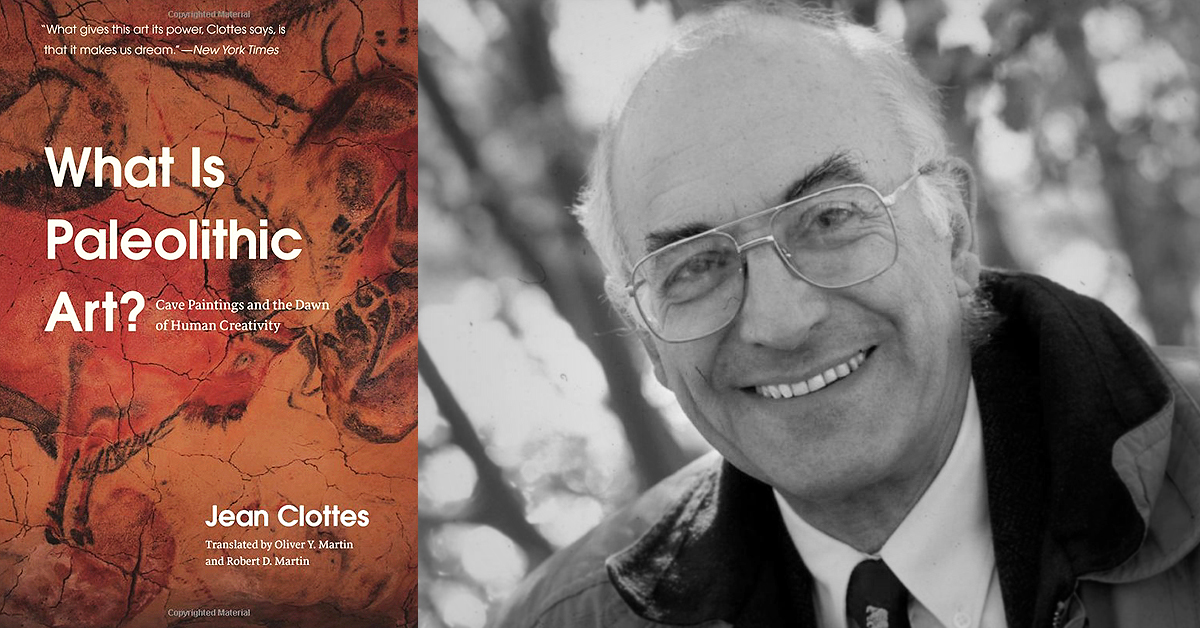


'What Is Paleolithic Art? Cave Paintings and the Dawn of Human Creativity' by Dr Jean Clottes.
Translated from the original French version 'Pourquoi l'art prehistorique?'

Book Description:
Was it a trick of the light that drew our Stone Age ancestors into caves to paint in charcoal and red hematite, to watch the heads of lions, likenesses of bison, horses, and aurochs in the reliefs of the walls, as they flickered by firelight? Or was it something deeper a creative impulse, a spiritual dawn, a shamanistic conception of the world efflorescing in the dark, dank spaces beneath the surface of the earth where the spirits were literally at hand? In this book, Jean Clottes, one of the most renowned figures in the study of cave paintings, pursues an answer to this why of Paleolithic art. While other books focus on particular sites and surveys, Clottes s work is a contemplative journey across the world, a personal reflection on how we have viewed these paintings in the past, what we learn from looking at them across geographies, and what these paintings may have meant what function they may have served for their artists. Steeped in Clottes's shamanistic theories of cave painting, 'What Is Paleolithic Art?' travels from well-known Ice Age sites like Chauvet, Altamira, and Lascaux to visits with contemporary aboriginal artists, evoking a continuum between the cave paintings of our prehistoric past and the living rock art of today. Clottes's work lifts us from the darkness of our Paleolithic origins to reveal, by firelight, how we think, why we create, why we believe, and who we are.
Review by Steven Mithen, 'The shadows on the wall': Watching a great mind decode cave art is a rare joy, finds Steven Mithen.
New Scientist 14 May 2016:
JEAN CLOTTES has been looking at and thinking about the cave paintings of ice age Europe for almost half a century. I can't imagine anyone has a greater knowledge about the paintings, carvings, sculptures and their associated archaeology than this great prehistorian. It's not just greater knowledge, but an emotional response: I've seen tears come into his eyes as he was describing a painting that he must have seen and talked about many times before, and that still tugged at his heart as much as his brain. Clottes's enormous depth of learning and affection emanate from every page of this book, originally published as 'Pourquoi l'art prehistorique?'
The presumably deliberate mistranslation of the French title by the publishers into What is Paleolithic Art? is misleading to the reader and does Clottes a disservice. Within the first few pages Clottes is quite clear that his intention is to address the 'why' not the 'what' about cave art. Indeed, the book assumes that the reader already has a grasp of what the art is about.
The book: It rests on almost half a century of looking and learning by Clottes and concludes with the modesty only great minds possess: "At the end of the day, if we have only very few certainties, by exercising caution and building on what is known and what is probable, I feel that we are able to approach these distant hunters of the Paleolithic with somewhat greater success."
Review by Jill Cook, 'Old masters, early cultures'.
Nature Vol 532 21 April 2016:
Subtle, imaginative and brilliantly accomplished, the images of animals and humans found in caves and dated from the end of the last Ice Age, between 40,000 and 10,000 years ago, continue to astonish us. The emotions and motives that inspired them beg to be understood. In What is Paleolithic Art?, Jean Clottes, the renowned cave- and rock-art specialist, suggests some answers.
This is a thought-provoking book about complex societies that endeavoured to understand the world in their own various ways. For anyone interested in Ice Age art, Clottes's enthusiasm cannot fail to energize, inspire and provide caution to their own investigations.
Product details:
Paperback: 214 pages
Publisher: University of Chicago Press (12 April 2016)
Language: English
ISBN-10:022626663X
ISBN-13:978-0226266633
Product Dimensions: 15.2 x 1.8 x 22.9 cm
by Bradshaw Foundation
Tuesday 19 November 2024
by Bradshaw Foundation
Wednesday 22 May 2024
by Bradshaw Foundation
Friday 10 November 2023
by Bradshaw Foundation
Thursday 12 January 2023
by Bradshaw Foundation
Thursday 10 November 2022
by Bradshaw Foundation
Tuesday 06 September 2022
by Bradshaw Foundation
Wednesday 20 July 2022
by Bradshaw Foundation
Monday 20 June 2022
by Bradshaw Foundation
Thursday 03 September 2020
by Bradshaw Foundation
Wednesday 26 August 2020
by Bradshaw Foundation
Saturday 27 June 2020
by Bradshaw Foundation
Tuesday 28 April 2020
by Bradshaw Foundation
Tuesday 19 November 2024
by Bradshaw Foundation
Wednesday 22 May 2024
by Bradshaw Foundation
Friday 10 November 2023
by Bradshaw Foundation
Thursday 12 January 2023
by Bradshaw Foundation
Thursday 10 November 2022
by Bradshaw Foundation
Tuesday 06 September 2022
by Bradshaw Foundation
Wednesday 20 July 2022
by Bradshaw Foundation
Monday 20 June 2022
by Bradshaw Foundation
Thursday 03 September 2020
by Bradshaw Foundation
Wednesday 26 August 2020
by Bradshaw Foundation
Saturday 27 June 2020
by Bradshaw Foundation
Tuesday 28 April 2020
Friend of the Foundation











